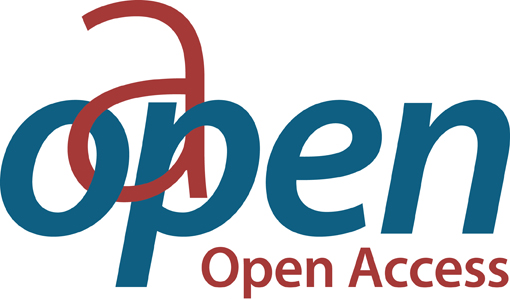| dc.description.abstract | We are today confronted with an unprecedented, ever-increasing rate of global biodiversity decline at the ecosystem, the species, and the genetic level, with yet unforeseeable consequences for both our planet and humankind.To mitigate the underlying anthropogenic processes, political action is overdue, informed by science. At the same time, the scientific community is called upon as a major player on another front: as a response to current and expected biodiversity loss and environmental degradation, we need to promptly and drastically ramp up efforts regarding ex-situ conservation and regarding the archival of molecular samples. Key infrastructures in this process are biobanks (see, e.g., Jarman et al. 2018; Ryder and Onuma 2018; Colella et al. 2020; Angeles and Catap 2022).Biobanks are “future-making institutions” (Breithoff and Harrison 2020) and memory institutions at the same time, and they warrant the integrity, authenticity, availability, and (where necessary) confidentiality of molecular and/or viable samples and associated data for current and future research (Astrin et al. 2013).Seed banks, DNA banks, culture collections, genebanks, genetic/biological resource centres, veterinary biobanks, parasite banks, germplasm banks, environmental specimen banks, etc.: biobanks (or biorepositories) come in a variety of forms, each of them playing an important role in the task to conserve and procure biodiversity or environmental samples. Together, their collections comprise (cold-)preserved samples from a multitude of environments and span the entire tree of life, in the form of whole organisms, or as fixed or viable subsamples.To date, many biobanks still operate in a relatively isolated fashion. This does not necessarily imply that each biobank works for itself; extensive biobanking collaborations and networks exist (amongst others the World Federation of Culture Collections WFCC, or the Global Genome Biodiversity Network GGBN; or the overarching networks including human biobanking like the International Society for Biological and Environmental Repositories ISBER, the European, Middle Eastern, and African Society for Biopreservation and Biobanking ESBB, or the Asian Network of Research Resource Centers ANRRC). However, the biodiversity and environmental biobanking community is currently scattered into thematic ‘biobanking tribes’, with limited exchange amongst them. To some degree, this results from divergent near-term goals and from the particularities of the many different targeted organisms or sample types and their respective methodologies and metadata microcosms (Bach et al. 2012). Nonetheless, focusing on commonalities and further increasing the exchange and cooperation amongst biobanking tribes would be helpful in identifying research and taxonomic/geographic gaps, in harmonising data visualisation (e.g., Droege et al. 2014), in obtaining funding and optimising protocols and best practices.The last aspect—development, optimisation and sharing of protocols and biobank practices—constitutes the focus of the present handbook. One important characteristic of biobanks is that they follow standardised workflows (Hewitt and Watson 2013).We compiled extensive information on such workflows from throughout most of the biodiversity and environmental biobanking communities. Publications, grey literature, and Internet sources were reviewed, and proven experts consulted. By linking to protocols and practices from many different types of biobanks we hope to inspire interdisciplinary approaches and interconnect biobankers, and to serve as an aggregated resource for incipient and thematically expanding biobanks. Maybe the compilation of practices can also contribute to processes of method validation and standardisation.This handbook is the first document to unify detailed information on such a wide range of biodiversity and environmental biobanking domains, targeting protists, fungi (here pragmatically divided into micro- and macrofungi, as procedures for the former are often close to protists, for the latter to plants), lichens, plants, and animals. We mostly excluded bacteria, archaea, and viruses so as to reduce complexity, and because various comprehensive sources already exist for them (e.g., Lapage et al. 1970; Tedeschi and De Paoli 2011) We also deliberately excluded a single animal species: Homo sapiens (except for archaeological remains, etc.). Most practices relevant to human biobanking can be found in the ISBER Best Practices: Recommendations for Repositories (ISBER BP) and various ISO standards. The freely available ISBER BP are periodically updated (Campbell et al. 2018) and contain ample information and recommendations on biobank management, equipment, safety, quality control, and liquid nitrogen handling. They are edited with the ambition to serve as a resource to all types of biobanks and in fact, biodiversity biobanks often successfully orient themselves at the ISBER BP. However, they mostly lack specialised biodiversity and environmental information, e.g., regarding culture collections, seed banking, or environmental samples.In this handbook, we aim to provide guidance and recommendations on field sampling, preservation, and storage of biomaterials along with management procedures. Chapters 4 to 7 focus on tissue and cell preservation and storage, whereas chapters 8 to 11 are concerned with DNA.Whereas information on molecular methods that we collected may have a relatively short life cycle, we expect that particularly the information on culture methods (organismic and cellular) and on viable storage (of cells, propagules, and organisms) will remain up to date for a considerable time. This handbook should be used alongside species- or group-specific information to customise or improve protocols.We would like to end on the note that biobanks are part of a much wider landscape of collections that together support life science research and possess great potential in helping to face the current biodiversity crisis. Biobanks are not isolated collections but exist in a nexus of other sample types and data—although the challenge remains to actually interconnect and semantically unlock them. Much like building bridges between the various biodiversity and environmental biobanking tribes, biobanks need to be aware of and interact with those collections that do not focus on molecular or viable samples. | |

